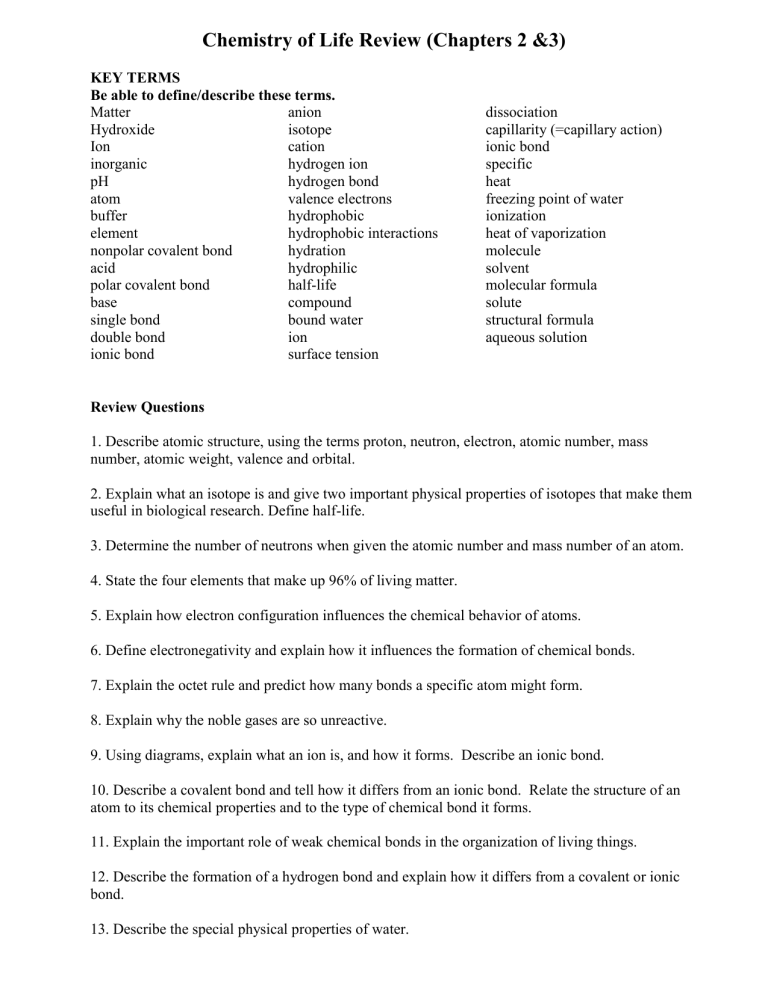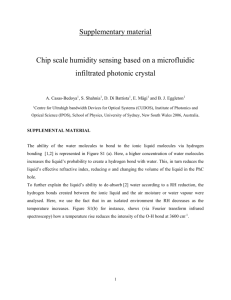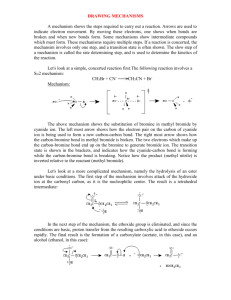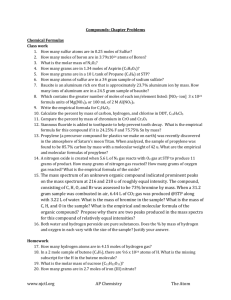Chemistry of Life Review

Chemistry of Life Review (Chapters 2 &3)
KEY TERMS
Be able to define/describe these terms.
Matter
Hydroxide
Ion anion isotope cation inorganic pH atom hydrogen ion hydrogen bond valence electrons buffer element nonpolar covalent bond acid polar covalent bond base single bond double bond ionic bond hydrophobic hydrophobic interactions hydration hydrophilic half-life compound bound water ion surface tension dissociation capillarity (=capillary action) ionic bond specific heat freezing point of water ionization heat of vaporization molecule solvent molecular formula solute structural formula aqueous solution
Review Questions
1. Describe atomic structure, using the terms proton, neutron, electron, atomic number, mass number, atomic weight, valence and orbital.
2. Explain what an isotope is and give two important physical properties of isotopes that make them useful in biological research. Define half-life.
3. Determine the number of neutrons when given the atomic number and mass number of an atom.
4. State the four elements that make up 96% of living matter.
5. Explain how electron configuration influences the chemical behavior of atoms.
6. Define electronegativity and explain how it influences the formation of chemical bonds.
7. Explain the octet rule and predict how many bonds a specific atom might form.
8. Explain why the noble gases are so unreactive.
9. Using diagrams, explain what an ion is, and how it forms. Describe an ionic bond.
10. Describe a covalent bond and tell how it differs from an ionic bond. Relate the structure of an atom to its chemical properties and to the type of chemical bond it forms.
11. Explain the important role of weak chemical bonds in the organization of living things.
12. Describe the formation of a hydrogen bond and explain how it differs from a covalent or ionic bond.
13. Describe the special physical properties of water.
14. Draw two water molecules in a way that illustrates a hydrogen bond.
15. Explain the relationship between the polar nature of water and its ability to form hydrogen bonds.
16. Describe the structure and geometry of a water molecule, and explain what properties emerge as a result of this structure.
17. Describe how water contributes to the fitness of the environment to support life.
18, List five characteristics of water that are emergent properties resulting from hydrogen bonding.
19. Explain how water's high specific heat, high heat of vaporization and expansion upon freezing affect both aquatic and terrestrial ecosystems.
20. Explain how the polarity of the water molecule makes it a versatile solvent.
21. Describe the biological importance of the cohesiveness of water.
22. Distinguish between heat and temperature.
23. Explain the basis for the pH scale.
24. Explain why buffers important to living things. Explain how a buffer system works.










